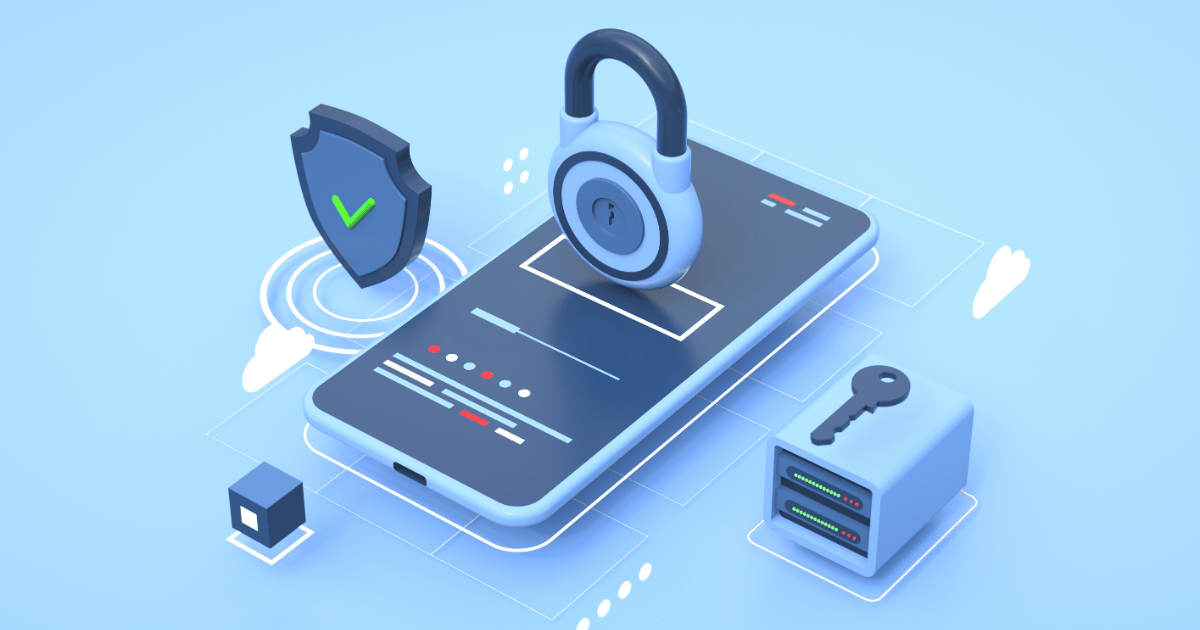Introduction to Cybersecurity and Its Impact on Business
Cybersecurity, is the practice of safeguarding computers, servers, networks, and electronic systems from unauthorized access, attacks, and damage. Its scope goes beyond traditional antivirus measures, encompassing a comprehensive approach to address the dynamic nature of cyber threats. From protecting personal information to securing critical infrastructure, cybersecurity plays a pivotal role in a broad spectrum of domains where digital assets are at risk.
Evolution of Cybersecurity
The evolution of cybersecurity mirrors the rapid development of the digital landscape. Initially focused on basic antivirus measures, it has transformed into a sophisticated and multi-faceted discipline. Milestones include the establishment of encryption standards, the development of intrusion detection systems, and the incorporation of artificial intelligence (AI) and machine learning (ML) technologies to bolster defense mechanisms.
Key Components of Cybersecurity
Threat Landscape Analysis
The modern threat landscape is characterized by an assortment of cyber threats, ranging from malware and phishing attacks to sophisticated ransomware and nation-state-sponsored cyber-espionage. Understanding this landscape is essential for cybersecurity professionals as they must continuously adapt to new tactics employed by malicious actors. The dynamic nature of cyber threats demands proactive measures to identify vulnerabilities and mitigate potential risks.
Security Infrastructure
Building a robust cybersecurity infrastructure involves a combination of technological tools and procedural measures. Firewalls act as a first line of defense, monitoring and controlling network traffic. Antivirus software detects and removes malicious programs, while encryption ensures the confidentiality of sensitive data. Regular security audits and employee training further fortify the security posture of an organization.
The Business Impact of Cybersecurity
Financial Implications
The financial ramifications of a cybersecurity incident can be severe. Data breaches, for instance, may result in direct financial losses due to the theft of sensitive information. Moreover, the costs associated with mitigating the breach, legal expenses, and potential regulatory fines contribute to the financial burden. Investing in robust cybersecurity measures becomes a strategic decision to safeguard a business’s financial health.
Reputational Damage
Beyond financial consequences, cybersecurity incidents can inflict lasting damage on a business’s reputation. The loss of customer trust, negative publicity, and the perception of inadequate security measures can tarnish a brand’s image. Case studies of prominent breaches serve as cautionary tales, emphasizing the need for businesses to prioritize cybersecurity to maintain their standing in the eyes of customers and stakeholders.
Legal and Regulatory Consequences
The legal landscape surrounding cybersecurity is evolving, with governments and regulatory bodies imposing stringent requirements on businesses to protect sensitive data. Failure to comply with these regulations can result in legal consequences, including fines and penalties. Adhering to cybersecurity standards is not only a prudent business practice but also a legal imperative to avoid potential legal liabilities.
Implementing Effective Cybersecurity Measures
Developing a Cybersecurity Strategy
Crafting a robust cybersecurity strategy is foundational to defending against cyber threats. This involves a thorough assessment of the organization’s risk profile, identification of potential vulnerabilities, and alignment of cybersecurity measures with business goals. A comprehensive strategy provides a roadmap for prioritizing investments, allocating resources effectively, and building a resilient defense against evolving threats.
Employee Training and Awareness
Recognizing that employees are both the frontline and potential weak link in cybersecurity, businesses invest in training programs to enhance awareness and educate staff about best practices. From recognizing phishing attempts to understanding the importance of strong passwords, an educated workforce contributes significantly to the overall cybersecurity posture of an organization.
Incident Response and Recovery
Despite the best preventive measures, cybersecurity incidents can still occur. Establishing well-defined incident response and recovery plans is crucial for minimizing the impact of such incidents. These plans outline the steps to be taken when a breach occurs, ensuring a swift and coordinated response to mitigate damage, restore services, and learn from the incident to enhance future cybersecurity measures.
Emerging Trends in Cybersecurity
Artificial Intelligence and Machine Learning
Artificial intelligence (AI) and machine learning (ML) are at the forefront of shaping the future of cybersecurity. These technologies empower cybersecurity systems to adapt dynamically to evolving threats. AI-driven threat detection, behavior analysis, and anomaly detection enhance the ability to identify and respond to cyber threats in real-time, providing a proactive defense mechanism against sophisticated attacks.
IoT Security
As the Internet of Things (IoT) continues to proliferate, securing interconnected devices becomes paramount. IoT security involves safeguarding the vast network of interconnected devices, from smart appliances to industrial sensors. Addressing the unique challenges posed by the sheer volume and diversity of IoT devices requires specialized cybersecurity measures to protect against potential vulnerabilities.
Conclusion
The Imperative of Cybersecurity in the Digital Age
In conclusion, cybersecurity stands as a critical imperative in the digital age, where the stakes are high, and the threat landscape is ever-evolving. From protecting sensitive data to preserving financial health and maintaining reputational integrity, the impact of
1. Cybersecurity Threats to Businesses
A. Malware Attacks
Malware attacks are one of the most common cyber threats to businesses. Malware is a type of software designed to harm computer systems, steal sensitive data, or gain unauthorized access to a network or device. Malware can be introduced to a system through various means, including email attachments, infected websites, and malicious links.
To protect against malware attacks, businesses should implement antivirus software, firewalls, and intrusion detection systems. Regularly scanning systems for malware and keeping software up-to-date can also help prevent malware attacks.
B. Phishing Scams
Phishing scams are another common cyber threat to businesses. Phishing scams involve criminals sending fraudulent emails or messages to individuals and businesses in an attempt to trick them into providing sensitive information, such as usernames and passwords or credit card details. Phishing scams can also involve fake websites that look like legitimate ones.
To protect against phishing scams, businesses should train employees to be aware of the risks and to identify potential phishing scams. Implementing email filters and antivirus software can also help prevent phishing scams.
C. Social Engineering
Social engineering involves manipulating individuals to gain access to sensitive information or systems. This can include tactics such as impersonating a trusted authority figure, using fake job postings, or creating fake social media profiles to gain access to personal information.
To protect against social engineering attacks, businesses should implement policies and procedures for verifying the identity of individuals requesting access to sensitive information or systems. Regular training on social engineering tactics can also help prevent these types of attacks.
2. Cybersecurity Best Practices for Businesses
A. Use Strong Passwords
Using strong passwords is one of the most basic cybersecurity practices for businesses. Passwords should be at least eight characters long, contain a mix of upper and lowercase letters, numbers, and symbols, and should not be easy to guess.
B. Implement Two-Factor Authentication
Two-factor authentication is an additional layer of security that requires users to provide two forms of identification before gaining access to a system or network. This can include a password and a code sent to a user’s mobile device.
C. Keep Software Up-to-Date
Keeping software up-to-date is essential for protecting against cyber threats. Software updates often include security patches that address known vulnerabilities and help prevent cyber attacks.
D. Train Employees on Cybersecurity
Training employees on cybersecurity best practices is crucial for protecting against cyber threats. Employees should be trained on how to identify potential cyber threats, how to create strong passwords, and how to respond to potential cyber-attacks.
3. Cybersecurity Implementation in Business
A. Cybersecurity Policies
Implementing cybersecurity policies is essential for protecting against cyber threats. Cybersecurity policies should outline the procedures and best practices for protecting sensitive information and systems, as well as provide guidelines for responding to potential cyber-attacks.
B. Cybersecurity Insurance
Cybersecurity insurance can protect businesses in the event of a cyber attack. Cybersecurity insurance can cover the costs associated with data breaches, including legal fees, regulatory fines, and notification costs.
C. Cybersecurity Audits
Cybersecurity audits can help businesses identify potential vulnerabilities and areas for improvement in their cybersecurity practices. Audits can include vulnerability scans, penetration testing, and security assessments to identify potential weaknesses in a system or network.
Summary of Key Points
Cybersecurity is a critical issue for businesses in today’s digital age. Malware attacks, phishing scams, and social engineering are common cyber threats that businesses face. To protect against these threats, businesses should implement best practices such as using strong passwords, implementing two-factor authentication, keeping software up-to-date, and training employees on cybersecurity. Implementing cybersecurity policies, cybersecurity insurance, and conducting cybersecurity audits can also help businesses protect against cyber threats.
Future of Cybersecurity in Business
As technology continues to evolve, the future of cybersecurity in business will become increasingly complex. Cybercriminals will continue to develop new and more sophisticated methods of cyber attacks, and businesses will need to keep pace with these changes to protect their assets and reputations. The rise of the Internet of Things (IoT) will also present new challenges for cybersecurity, as more devices become connected to the Internet and create potential entry points for cyber attacks.
In conclusion, businesses must prioritize cybersecurity and implement best practices to protect their assets, reputation, and customers. By staying vigilant and proactive in their cybersecurity practices, businesses can reduce the risk of cyber-attacks and ensure the safety and security of their digital information.




